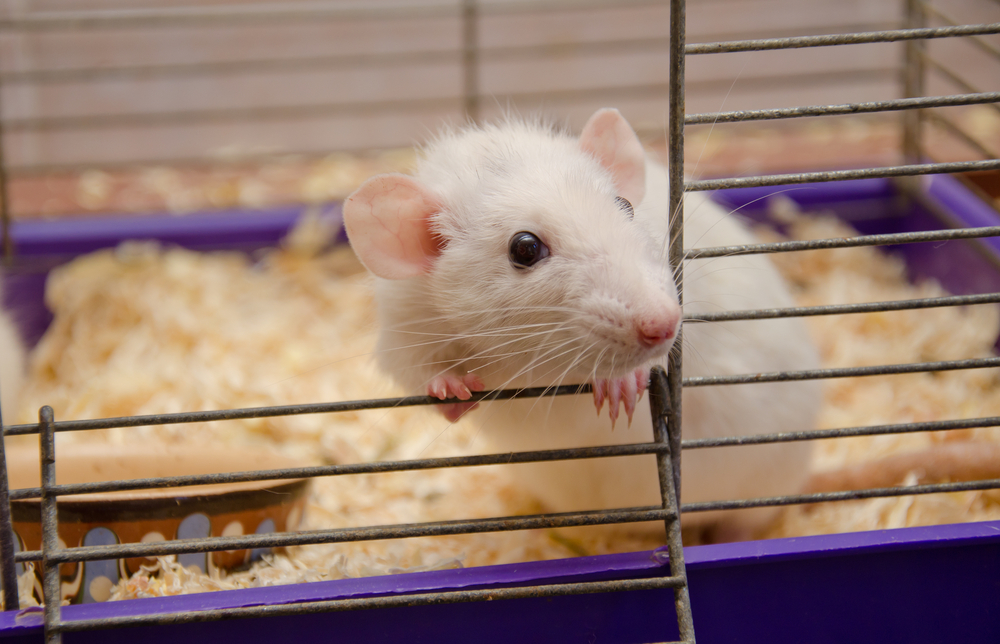Unusual Behaviors of Fragile X Stop with OV101 Treatment, Study in Mouse Model Reports
Written by |

OV101 (gaboxadol) shows an ability to reverse the hyperactivity, irritability, anxiety, aggression and repetitive behaviors that are characteristic of fragile X syndrome, a study in a mouse model of the disease reports.
These findings, “Gaboxadol Normalizes Behavioral Abnormalities in a Mouse Model of Fragile X Syndrome,” were published in Frontiers in Behavioral Neuroscience.
Fragile X syndrome, the most frequent single genetic cause of autism spectrum disorder (ASD), is caused by the expansion of CGG repeats in the fragile X mental retardation 1 (FMR1) gene, which provides instructions for making a protein called the fragile X mental retardation protein or FMRP.
Patients affected by the disease often exhibit austism-like features, including impaired social skills, hyperactivity, and repetitive behaviors, together with intellectual and developmental disabilities as evidenced in speech.
Recent studies suggest that gamma-aminobutyric-acid (GABA), a neurotransmitter that inhibits the activity of neurons in the brain, and its GABAA receptor may play a role in fragile X. (Neurotransmitters are chemical messengers that allow nerve cells to communicate.)
“[I]ndividuals with [fragile X] show reduced GABAA receptor availability. With regard to behavior, hyperactivity, auditory startle, and learning and memory observed in [fragile X] mice have been correlated with the loss of inhibitory tone from GABAergic inputs into the cerebellum and amygdala, two brain regions also linked to human [fragile X],” the investigators wrote.
Of note, the cerebellum is the brain region responsible for movement control and balance, while the amygdala is involved in memory, decision-making, and emotional responses.
Researchers in the U.S., working with colleagues in Chile and the U.K., set out to test whether OV101 might restore normal behavior in a mouse model of FXS (Fmr1 KO2 mice).
OV101 is an investigational selective and potent agonist (activator) of a particular subunit of GABAA receptors being developed by Ovid Therapeutics to treat fragile X and Angelman syndrome.
The potential therapy has been granted fast track designation by the U.S. Food and Drug Administration for the treatment of fragile X.
A series of tests were done to assess four main categories of behaviors that are usually impaired in patients and animals with fragile X: hyperactivity, aggression and irritability, anxiety-like behaviors, and repetitive behaviors.
As expected, fragile X mice were more hyperactive, aggressive and irritable, and more likely to show signs of anxiety or to engage in repetitive behaviors than healthy animals that served as controls.
All these abnormal behaviors disappeared when mice were given intraperitoneal injections (injection through the abdominal wall) of OV101 (0.5-5.0 mg/kg) on each testing day, approximately 30 minutes before the start of the test.
“In all cases, treatment with 0.5 mg/kg gaboxadol restored the behavior of the [fragile X] mice to [that of healthy animals]. These data provide additional support for augmentation of dSEGA [delta-subunit-containing extrasynaptic GABAA receptors] activity and tonic inhibition by [OV101] as a therapeutic strategy that warrants further investigation in individuals with [fragile X],” the researchers wrote.
Tonic inhibition is the process by which the brain correctly identifies excitatory and inhibitory neural signals without being overloaded.
“In conclusion, these data support the future evaluation of [OV101] in individuals with [fragile X], particularly with regard to symptoms of hyperactivity, anxiety, ASD related stereotypy, sociability, irritability, aggression, and cognition,” the team concluded.
Three of this study’s six scientists are identified as full-time employees of Ovid Therapeutics.





